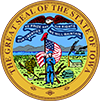Iowa

Iowa’s Alternative Energy Law (AEL)--also known as a Renewable Portfolio Standard (RPS)—is intended to increase use of renewable resources in the state by establishing the minimum amount of renewable energy that the state’s electricity providers must sell in a given year. This legally-established renewable energy procurement goal is set at an overall target of 105 MW of renewable capacity.
The state profile below explores the design of this policy, highlighting the factors that influence the success of Iowa’s RPS goals and the tradeoffs inherent to it. Once you’re comfortable with the information on this page, you can evaluate the policy’s expected viability with the RPS Feasibility Calculator. You can also use the calculator to change the policy requirements, trajectory, cost cap, and more, to see how altering Iowa’s policy design affects its success.
RPS Snapshot
Overview
- 105 MW of the state's retail electric sales from must be from renewable sources
- No carve-outs
- No legally defined cost cap
Carve-outs
Carve-outs can create economic opportunities in the state by introducing new or promising technologies into the market. However, these standards limit the utilities’ ability to substitute between renewable energy sources, potentially increasing the cost of the policy. Iowa does not require any technology carve-outs.
RPS Progress
Compare the goal established in the RPS to what is being achieved.
It is important to note that Iowa has already surpassed its 105 MW installed capacity goal, and had already been compliant at the time of legislation being enacted.
Energy Details
Grid Mix
The following chart compares the variety of sources currently used to generate Iowa’s electricity. The color of each bar is indicative of the carbon intensity of each source.
Cost Cap Details
Unlike some states, Iowa does not have an explicit ‘cost cap’ or limit on the potential increase in electricity costs as a result of this policy. Using the RPS Feasibility Calculator you can act as the Public Utilities Commission and define an explicit cost cap, determining what level of costs will lead to a viable RPS.
Historic retail prices (¢ / kWh)
The above chart presents historical data from the Energy Information Administration (EIA) on the price at which residential customers can purchase electricity. Typically, states set explicit cost caps relative to the retail price (as opposed to the lower wholesale price).
Legislation
Statute
Iowa’s policy was adopted in 1983 as a capacity-based requirement, before energy-based policies became popular. The Iowa Alternative Energy Law (§ 476.41) requires its investor-owned utilities to own or contract a total of 105 MW of renewable energy. It is split between MidAmerican Energy (55.2 MW, or 52.57% of demand) and Alliant Energy Interstate Power and Light (49.8 MW, or 47.43% of demand). There are no mandated increases, and the target has already been achieved. Although, more ambitious renewable energy targets have been considered by the Iowa Legislature, it may be advantageous to the state (and for her ratepayers) to maintain a low RPS goal. This allows the state’s utilities to profit by selling renewable energy attributes to nearby states with higher RPS obligations.
RPS Technical Details
| Policy | Description |
|---|---|
| Eligible Technologies | Solar, Wind, Waste Management, Resource Recovery, Refuse-Derived Fuel, Agricultural Crops or Residues, Woodburning Facilities, or Small Hydropower Facilities |
| Geographic Eligibility | Tradable Renewable Certificates (TRCs) cannot be used for compliance |
| Percent of Total Load | 75.7% |
| Technology Requirements | None |
| Sectors | Investor-Owned Utilities |
| Penalty | None |
Resources
Tools and other links
- Database of State Incentives for Renewables & Efficiency (DSIRE) RPS data page—Datasets available for download in .xlsx format
- National Renewable Energy Laboratory (NREL) Energy Analysis Portal—Resources on renewable energy policies, and interactive web tools
- Energy Information Administration (EIA) U.S. Energy Mapping System—An interactive energy resource map with a myriad of data layers to explore
References
- DSIRE State RPS Page—Visit for detailed information on RPS and complete legislation